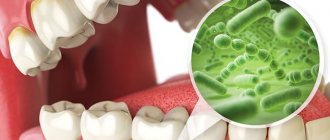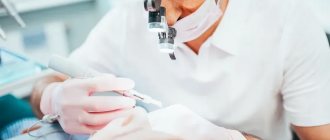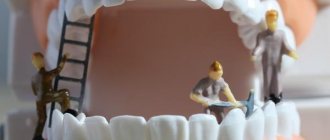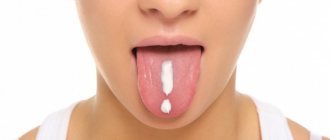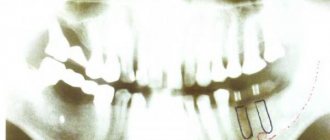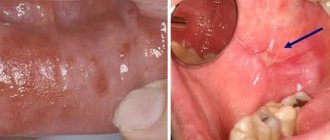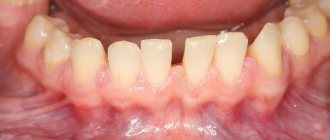Lip laceration: first aid
Pre-processing is carried out in the following sequence:
- Stop bleeding - cold is applied to the lip, followed by hemostatic agents to reduce bleeding. It is recommended to treat the wound with hydrogen peroxide to prevent inflammation.
- Reassure the person and record the time of the wound formation - if there is a large loss of blood, hemorrhagic and painful shock can occur, so talk to the victim and maintain communication with him before coming to the hospital.
- Reducing pain in the wound - the patient can be given any painkiller (Analgin, Nurofen), which will reduce pain symptoms and improve the general condition.
How to properly freeze a wound on the lip
In the absence of breathing and a threadlike pulse, it is necessary to carry out a series of resuscitation measures aimed at maintaining vital processes in the body. Artificial respiration is performed through the nose, as the wound site may become infected. Indirect cardiac massage allows you to avoid clinical death, but if performed incorrectly, complications can arise.
If the patient is unconscious, place him on his side so that if the wound bleeds, blood does not enter the stomach through the mouth. Severe painful shock can cause vomiting, so lying on your side minimizes the likelihood of vomit entering the respiratory system.
Symptoms of purulent wounds
Symptoms of purulent wounds are usually divided into local (characteristic of the wound itself) and general.
Local symptoms include: • formation of purulent exudate; • hyperemia; • swelling; • temperature increase; • pressing or bursting pain.
If the inflammatory process in the wound drags on, the redness around it becomes purple and cyanosis appears.
The edematous tissues directly in the area of injury are warm, and at some distance from it they are distinctly cold as a result of a reactive decrease in temperature.
General symptoms are manifestations of intoxication of the body with decay products that come from the wound. Common symptoms include: • increased body temperature; • lack of appetite; • nausea; • muscle weakness; • sweating; • fever; • chills; • headache.
In case of severe intoxication, symptoms such as severe weakness, mental disorders (hallucinations, delusions of persecution), confusion and even coma may be observed.
Lacerated wound of the lip: main stages of treatment
Wounds on the lips caused by a blow or other minor mechanical injury can be treated at home using special wound-healing creams and ointments. If the parting of the edges exceeds 1 cm, it will be necessary to apply sutures, which are performed by a doctor under sterile conditions.
Drug therapy
The healing time of a wound on the lip depends on the degree of its damage and the specifics of the body’s regeneration. On average, the entire process takes 2-3 weeks. To speed up healing and facilitate the entire process, the following groups of drugs are used:
Causes of a crack in the lower lip
There are many reasons for the development of this pathology:
- anatomical features of the lip;
- permanent mechanical damage;
- weather conditions (if people are interested in prices for mole removal all year round, then the problem of a crack in the lower lip is usually solved in the cold season);
- the neurotic nature of the person’s actions – regular licking of lips, biting them, etc.;
- avitaminosis;
- metabolic disorder;
- dry skin, etc.
Lip laceration: recommendations
The wound should be protected with a bandage, under which a tampon or bandage with ointment should be placed. Do dressings 2-3 times a day. Before applying a new layer of cream, the old one is removed by washing with hydrogen peroxide.
If the wound is infected and has become swollen and swollen, rinsing with furatsilin will help. If hardening occurs and pain increases, you will need to consult a specialist again, who will select suitable antibiotics that can stop the inflammatory process.
Chlorhexidine and miramistin can be applied to the inside of the wound, helping to prevent inflammation from spreading into the oral cavity. The use of drugs, their choice and duration of use directly depend on the degree of damage. Treatment at home is prescribed by a doctor, after which constant monitoring of the healing process is necessary.
If there are complex wounds on the face, hemorrhagic shock may require blood transfusions and the administration of solutions to replenish the volume of circulating fluid. In this case, before the procedure, a number of resuscitation measures are carried out to maintain the body in good condition.
What is a purulent wound?
A purulent wound is a wound in which an infection has developed. Infection is accompanied by the formation of pus and inflammation, which is easily noticeable at the edges of the wound. Purulent wounds can be infected from the moment the injury is caused, or they can be the result of infection of an initially clean wound, such as a surgical wound. The percentage of suppuration of surgical wounds is quite high even today - up to 30%, despite maintaining sterility.
A particular danger of purulent wounds is that the processes of absorption of decay products occurring in them can lead to severe general intoxication, and in the absence of proper treatment, to death. Purulent wounds often cause sepsis - blood poisoning.
Surgical intervention
Lip wounds with radiating edges require sutures. A local anesthetic is injected into the wound site and the edges are then sutured. The suture is treated with an antiseptic, and then a sterile bandage is applied.
Stitching a wound on the lip
The suture site is checked daily for inflammation. If the healing process is successful, the sutures are removed on the 10th day. Large complex wounds and multiple stitches may require additional assistance from a plastic surgeon.
After suturing, the patient is prescribed medications such as:
After the sutures are removed, the wound is treated with an antiseptic without a sterile dressing. To prevent the development of inflammation in the mouth, rinsing with herbal decoctions, furatsilin and treatment with hydrogen peroxide are recommended.
Stitching outside a medical facility is prohibited. Even with experience, there is a high probability of infection, since it is impossible to achieve infertility at home, which is possible in the operating room.
Causes of sores in the mouth
Purulent ulcers in the mouth can appear for various reasons. They are often the result of dental diseases.
The list of reasons may include the following:
- viral infections (herpes simplex or herpes zoster);
- fungal and bacterial infections;
- irritation of the mucous membranes from smoking and certain foods (nuts, cheese, citrus fruits);
- ulcerative stomatitis;
- chemotherapy drugs;
- frequent stress and nervous tension;
- oral injuries;
- hormonal changes.
Treating a torn lip at home
Treatment of a wound on the lip, if it is small, can be done at home. The following provisions apply for this:
If redness of the wound, swelling of the skin around it and an increase in temperature appear, you should immediately consult a doctor. Such symptoms indicate the addition of an infection that provokes the development of an inflammatory process.
To reduce wound trauma, it is recommended to refrain from eating solid foods that require careful chewing and jaw movement. You can use a blender to puree your food to make it easier to swallow. It is best to eat through a smoothie straw to prevent food from getting into the wound.
Leftover food can cause tooth decay, so you should rinse your mouth after every meal and protect the wound from the inside with a disinfectant.
In the absence of comprehensive treatment, after 2-3 days the wound begins to fester and the body temperature rises. The patient's condition deteriorates sharply and requires immediate medical attention. Refusal of medical care and suturing leads to irregular and uneven fusion of the ends of the wound, which provokes the appearance of a lip. The bite is disrupted and sensitivity is reduced. As a result, the skin becomes thinner and prone to flaking and dryness.
Causes of purulent wounds
The immediate cause of the development of suppuration in the wound is the entry of pathogenic microorganisms into it and their reproduction. Today in traumatology and surgery it is generally accepted that any accidental (i.e. not caused for medical purposes, not surgical) wound is infected - it contains one or another amount of bacteria. However, not every wound suppurates, since for suppuration a simultaneous combination of several factors is necessary: • a severe degree of tissue damage; • the presence of dead tissue and/or bleeding in the wound; • the presence of dead tissue and/or bleeding in the wound; • high concentration of pathogenic microorganisms.
According to research results, for the development of infection in normal undamaged tissues, a concentration of microbes in a volume of 100 thousand microbial bodies per 1 gram of tissue is required. More precisely, this is the so-called critical level of bacterial contamination, when exceeded, the inflammatory process begins. However, this level can decrease under certain conditions: • if there are foreign bodies or bleeding in the wound, the critical level decreases to 10 thousand microbes per 1 gram of tissue; • with ligature ischemia - disruption of the blood supply to tissues in the area where the ligature is tied - the level decreases to 1 thousand microbes per 1 gram.
Many other factors also influence the likelihood of developing suppuration.
1. Nature of the wound. Most often, lacerated and lacerated wounds fester due to the large amount of damaged and dead tissue; Also, such wounds are more often accompanied by contamination. Puncture wounds suppurate with a similar frequency - due to the long and thin wound channel in which purulent exudate accumulates, and a small hole in the skin that impedes its outflow. Suppuration is most rarely observed on incised wounds.
2. Location of the wound. The lower the wound is on the body, the greater the risk of suppuration. Most often, wounds fester on the feet, somewhat less often on the stomach, back, chest, and arms. The risk is lowest for head and neck wounds.
3. General condition of the body. Low immunity and general weakness increase the risk of suppuration. With good immunity, the body is able to cope even with significant bacterial insemination - the inflammatory process will proceed more violently, but quickly and will not spread to surrounding tissues.
4. Presence of somatic diseases. In addition to acute conditions that reduce immunity, chronic diseases increase the risk of suppuration and reduce the rate of healing. Diabetes mellitus is especially dangerous in this regard - due to metabolic disorders, tissues regenerate extremely slowly, and suppuration and inflammation develop even with minor wounds.
5.Age. The older a person is, the higher the risk of developing infection.
6. Build. Obese people have a higher risk of developing infection than thin people.
7. Environmental conditions. At high temperatures and humidity, the likelihood of suppuration increases.
All these factors must be taken into account when starting treatment.
Inflammation and suppuration are most often caused by bacteria such as streptococci, staphylococci, Klebsiella, Proteus, and Escherichia coli. These microorganisms are classified as a special category of pyogenic bacteria. However, in certain cases, suppuration can also be caused by other bacteria - pneumococci, shigella, salmonella.
Treatment of purulent wounds
When treating purulent wounds, the stage of the wound process should be taken into account. The wound process is a complex of reactions of the body to tissue damage. This process is conditionally divided into three phases: • inflammation phase; ○ stage of vascular changes; ○ stage of wound cleansing; • regeneration phase; • phase of scarring and epithelization.
In the first phase - the phase of inflammation - the formation of purulent exudate occurs with the simultaneous absorption of toxic substances. At this stage, the main task is to cleanse the wound - remove purulent masses and remnants of dead tissue, wash and drain the wound, and stop bleeding. Also at this stage it is necessary to limit and reduce inflammation as much as possible and destroy pathogenic microflora. To disinfect and ensure the outflow of fluid, antibacterial hydrophilic ointments are used, for example, levomekol or ready-made dressings - Voskopran with ointments levomekol, povidone-iodine or Dioxidin.
In the second phase, thin and delicate connective tissue with capillaries begins to form on top of the wound - granulation. At this stage, it is necessary to protect the newly formed tissue from damage, stimulate further regeneration and prevent the resumption of the inflammatory process. Healing-accelerating agents help stimulate regeneration - methyluracil ointment or Voskopran dressing with methyluracil ointment; dressings also help protect newly formed tissues.
The third phase is the formation of dense scar tissue over the wound and the beginning of epithelization. At this stage, it is necessary to accelerate epithelization and wound healing.
In the treatment process, the correct selection of dressings plays an important role. Dressing material for purulent wounds must meet the following requirements: • have high absorbency; • hold the medicinal product on its surface for a long time; • do not leave fibers; • allow oxygen to pass through, allowing the wound to “breathe”.
Medical dressings meet all of the above requirements. The range includes suitable dressings for the management of purulent wounds at all stages.
For the first phase, a Parapran dressing with chymotrypsin is well suited - it removes exudate into a secondary sorption dressing and has a necrolytic effect, helping to break down dead tissue and cleanse the wound, as well as Voskopran with various ointments: levomekol - anti-inflammatory effect; povidone-iodine and Dioxidin - antimicrobial action. For wounds with heavy exudation, Medisorb is recommended as a secondary dressing, a sorption dressing characterized by high absorbency.
In the second phase, it is recommended to use Voskopran with methyluracil ointment, which stimulates wound healing.
In the third phase, you can use a regular Voskopran dressing without ointment to speed up the epithelization process and protect the scar from mechanical damage.
Chitopran, a thin biopolymer dressing that stimulates and accelerates the healing process, is well suited for the management of difficult-to-heal wounds in the granulation stage. It creates a sterile environment with an optimal level of humidity that promotes epithelialization. The material is extremely thin and flexible, which allows it to be used by patients with fragile and sensitive skin. There is no need to remove the bandage - the material is absorbed naturally.
